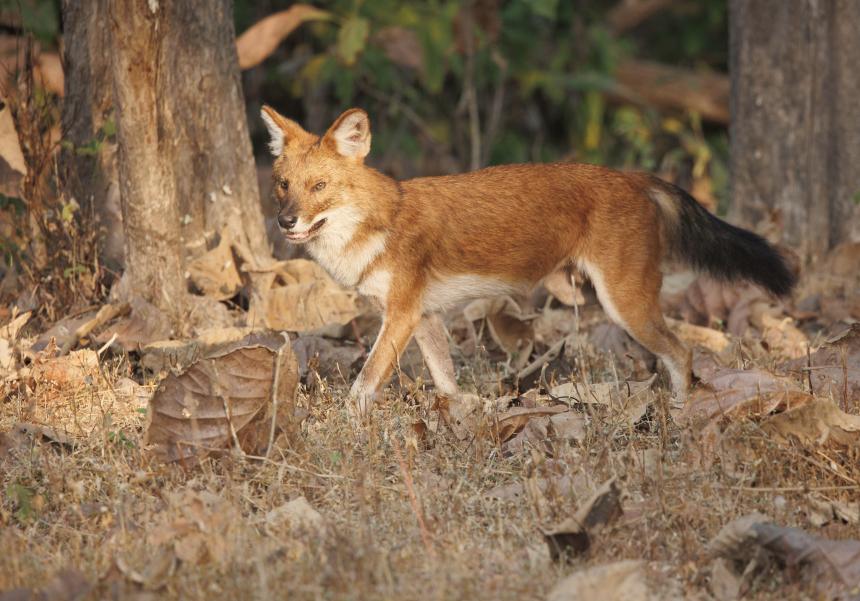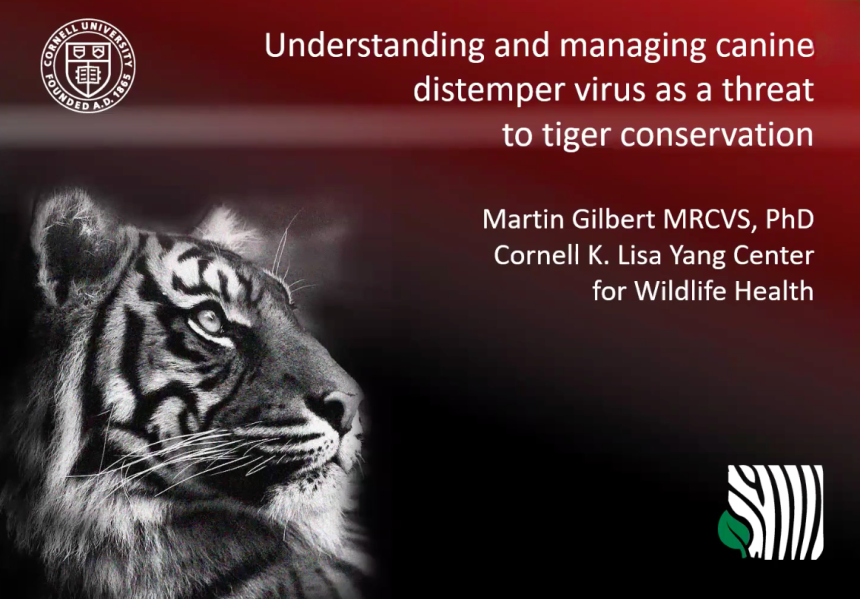In the News

January 22, 2025
A meeting of wildlife conservationists to develop a National Species Action Plan for Dholes in Nepal was held from August 9-11, 2024. Also known as Asiatic wild dogs, dholes are a globally endangered species of wild canid that has been lost from more than 75% of its former range due to habitat destruction, loss of prey, persecution, and disease.

For Your Information
December 02, 2024
Researchers including Cornell's Dr. Martin Gilbert discuss how developing vaccines and vaccination programs for free-living endangered wildlife could help conservation efforts to prevent extinctions from disease threats.

September 19, 2024
A new study from Cornell College of Veterinary Medicine researchers finds the first genetic evidence of feline coronavirus transmission between a captive wild and a domestic cat.

Announcement
September 17, 2024
After an international search, Carmen R. Smith ’17, DVM ’21, has been selected as the inaugural Cornell K. Lisa Yang Center for Wildlife Health Free-Ranging Wildlife Pathology Fellow, who will focus on unraveling the causes and conditions responsible for unexplained wildlife mortality events around the world.

Podcast
August 22, 2024
Tigers, leopards and now one-horned rhinos. Dr. Martin Gilbert studies them all. As a wildlife veterinarian and epidemiologist at Cornell, Dr. Gilbert has investigated infectious diseases and mysterious mass die-offs all over Asia. Check out this latest podcast featuring his work.

July 26, 2024
In October 2023, I had the opportunity to travel to Tasmania, the island state of Australia, to learn more about one of its most iconic species, the Tasmanian devil. Tasmanian devils are the world’s largest carnivorous marsupials, and they play a key ecological role as scavengers and in suppressing populations of invasive species....

Podcast
June 13, 2024
On this Cornell Veterinary Podcast, Dr. Martin Gilbert discusses his decades-long experience working in the nonprofit sector and in academia on international wildlife conservation projects in settings as diverse as Greenland, Papua New Guinea and Madagascar.

Announcement
May 15, 2024
Check out this new opportunity for our next generation of wildlife health / One Health leaders!

Video
April 26, 2024
Cornell's Dr. Martin Gilbert gives a presentation on "Understanding and Managing Canine Distemper Virus as a Threat to Tiger Conservation" at Cornell University's Department of Natural Resources and the Environment in March 2024.

Video
April 12, 2024
In this eCornell keynote presentation, Dr. Martin Gilbert, Helen Lee, and Laura Bernert from the Cornell K. Lisa Yang Center for Wildlife Health share their fieldwork experiences in Asia and help illustrate how the health of wildlife and our own health and well-being are inextricably linked.
